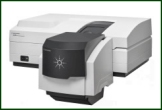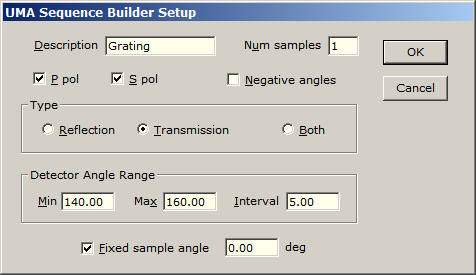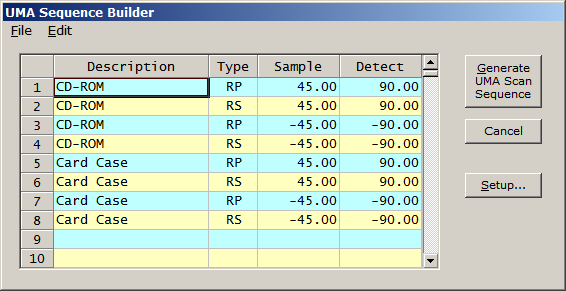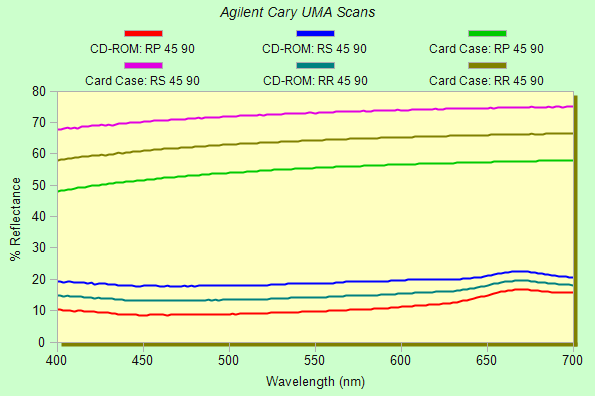|
Technical Issues - Cary UMA Support
Some advantages, perhaps best appreciated by current UMA users:
Scan sequences are
developed via the dialogs shown below. It's easy to specify a
multi-sample sequence using the same baseline (0%, 100%) settings.
In the case of the PIKE and other multiple-sample holders,
specifying Num samples > 1 automatically generates numbered
worksheets. A FilmStar BASIC macro drives the autosampler utilizing
sheet numbers to ensure proper placement.
Clicking OK generates the confirmation screen shown below. Repeat to include other ranges.
The final scan sequence can now be inspected. There is an option to scan a 0% baseline or just assume it's zero as shown here. While the scan sequence can be saved in Excel format, it is also saved automatically. Should the UMA Sequence Builder not meet requirements, users can create sequences in Excel.
The Collector is finally ready to scan and fill blank cells. Users are prompted to mount each sample. In Auto Sample mode automation, however, a BASIC macro automatically selects the next sample.
Scan completed! Green numbers indicate raw machine data. Clicking Setup..Normalize adjusts for baseline measurements, adding new columns in black. Optionally auto-delete raw data before saving.
Finally, averaging P and S as well as positive and negative sample angles gives the following:
The Collector is integrated with the FSPlot Module. Open FSPlot and select one or more columns and hit <F4> to create plots such as the one shown below.
The Spectra Collector can also be
opened in DESIGN, providing seamless integration between multi-angle
measurements and analysis. Agilent Technologies kindly provided a
Cary 7000 for FTG development. While we no longer have access
to the instrument, MEASURE Test Mode enables us to demonstrate
features via ZOOM. Integration with the UMA Solids Autosampler (manufactured by PIKE) and similar devices is provided through new BASIC function ScanPart$() which transfers worksheet labels (sample names). When Num samples is greater than one, each sheet is automatically labeled with "01" to "99" appended to Description. In the code below we've assumed that position #0 is empty. This simplifies operation since the autosampler can be left in place during 100% baseline (reference) scans. For further details, please click here. Sub Main ' Same BASIC syntax as Cary ADL Select Case ScanPart$() Case "0%" ' Required only if scanning blocked beam Case "100%" ' Empty part position #0 MoveTo 0 Case Else ' Extract sample part number MoveTo Val(Right$(ScanPart$(), 2) End Select End Sub Sub MoveTo(ByVal PartID%) ' Coordinates provided by PIKE (see below) End Sub In the unlikely event of a computer crash during an extended data collection, Auto Backup enables Crash Recovery whereby scanning resumes at the failure point. Contact us for an online demonstration. |
Copyright © 2023 FTG Software Associates
Last updated on
October 11, 2023







